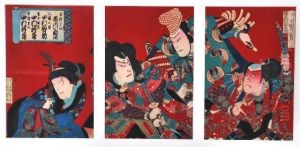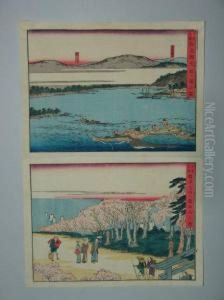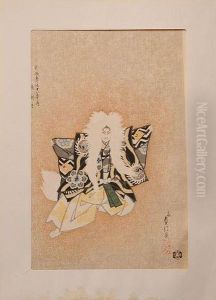Hasegawa Sadanobu Paintings
Hasegawa Sadanobu was a Japanese ukiyo-e artist known for his woodblock prints and contributions to the Osaka printmaking tradition. Born in 1809 in Osaka, Sadanobu was originally named Hasegawa Kichizo. He became a student of the ukiyo-e master Shigeharu, who was a prominent figure in the Osaka school of printmaking. This school was particularly renowned for its yakusha-e (actor prints), which depicted the popular kabuki actors of the time.
Sadanobu's works are characterized by their delicate lines and attention to detail, which set them apart from the bold and vigorous style typically associated with Edo printmakers like the renowned Utagawa Hiroshige. Sadanobu's prints often featured subjects from kabuki theatre and bijinga (pictures of beautiful women), as well as landscapes and historical scenes, reflecting a wide range of ukiyo-e themes.
As an artist, Sadanobu was active during a transitional period in Japanese history, the late Edo and early Meiji periods. Throughout his career, he witnessed the decline of the feudal system and the opening of Japan to the West, which brought significant cultural and social changes. These changes inevitably influenced the art market and the ukiyo-e genre.
Later in his career, Sadanobu took on the name Sadanobu II when his son, Sadahiro, inherited the title of Sadanobu. Under this new name, he continued to produce prints but also worked on paintings and book illustrations. Sadanobu's legacy lived on through his descendants, as his family continued to be involved in the arts for generations after his death in 1879.
Though not as famous as some of his contemporaries, Hasegawa Sadanobu's contributions to the world of Japanese printmaking are still appreciated by collectors and scholars of Japanese art. His works capture the spirit and culture of his time and remain a testament to the rich tradition of the Osaka school.







